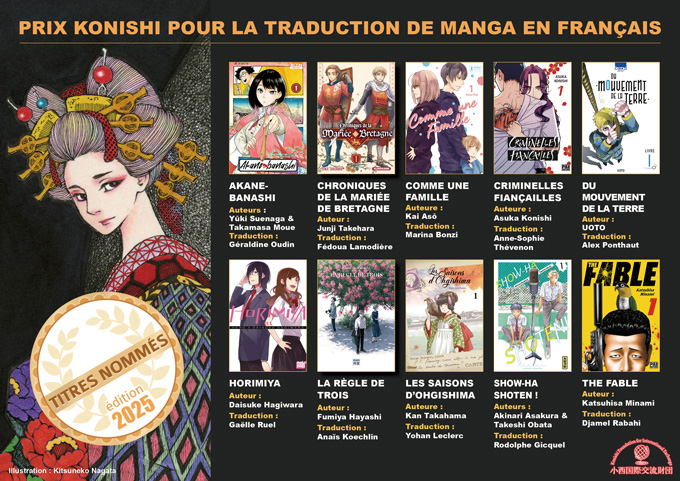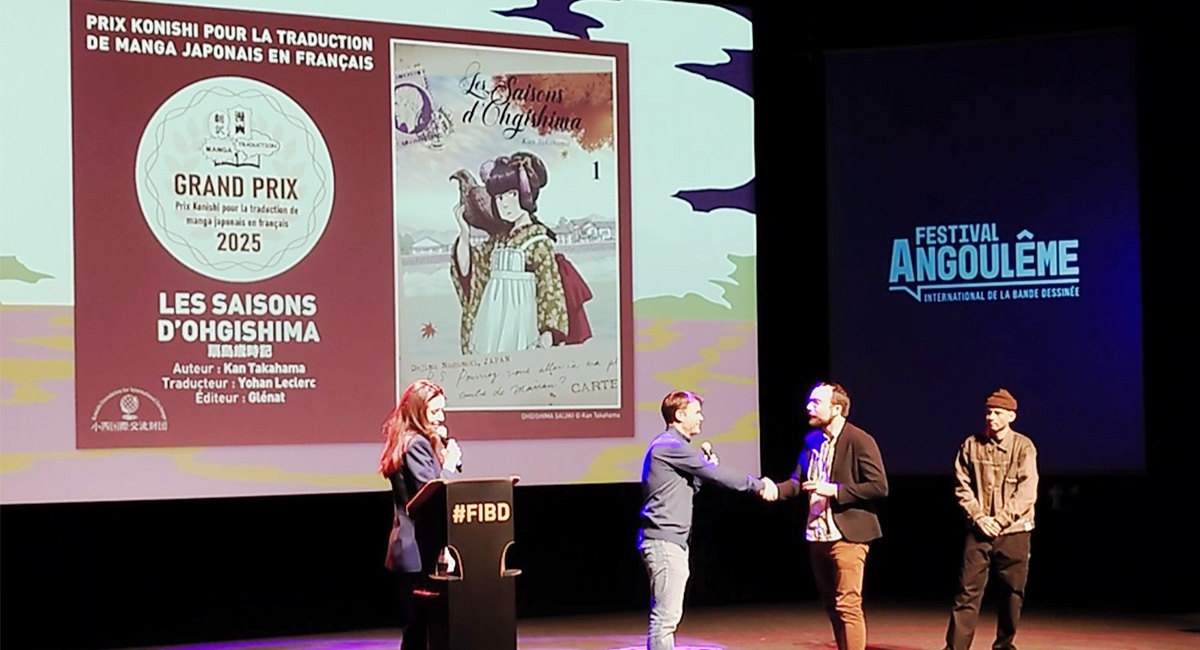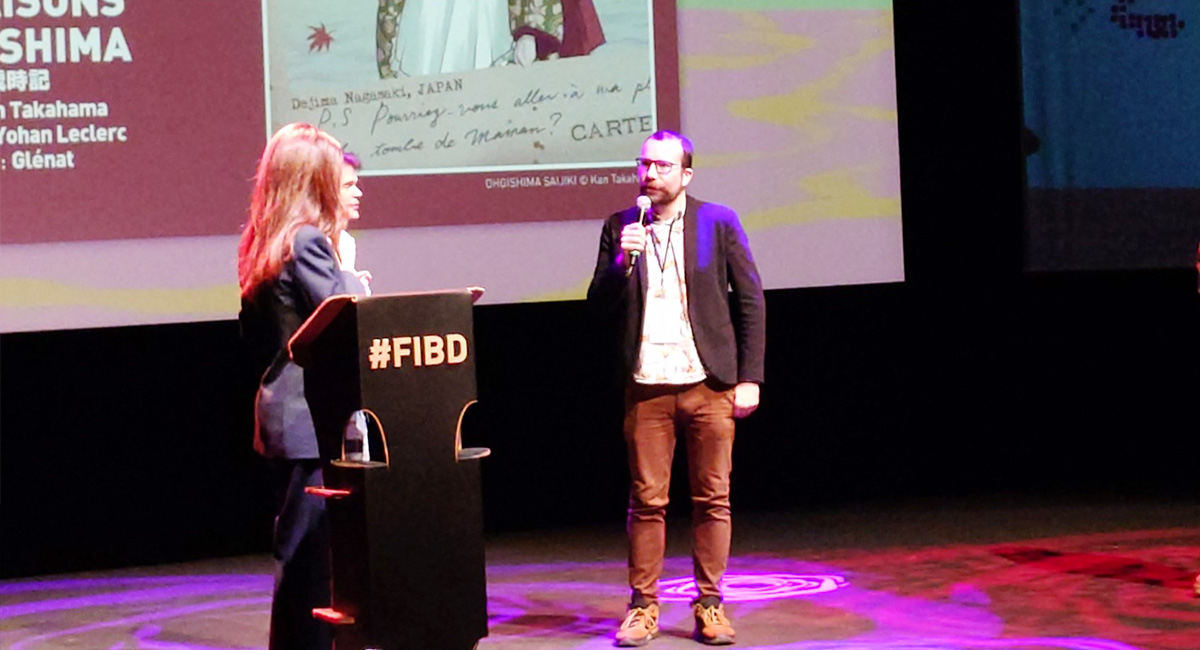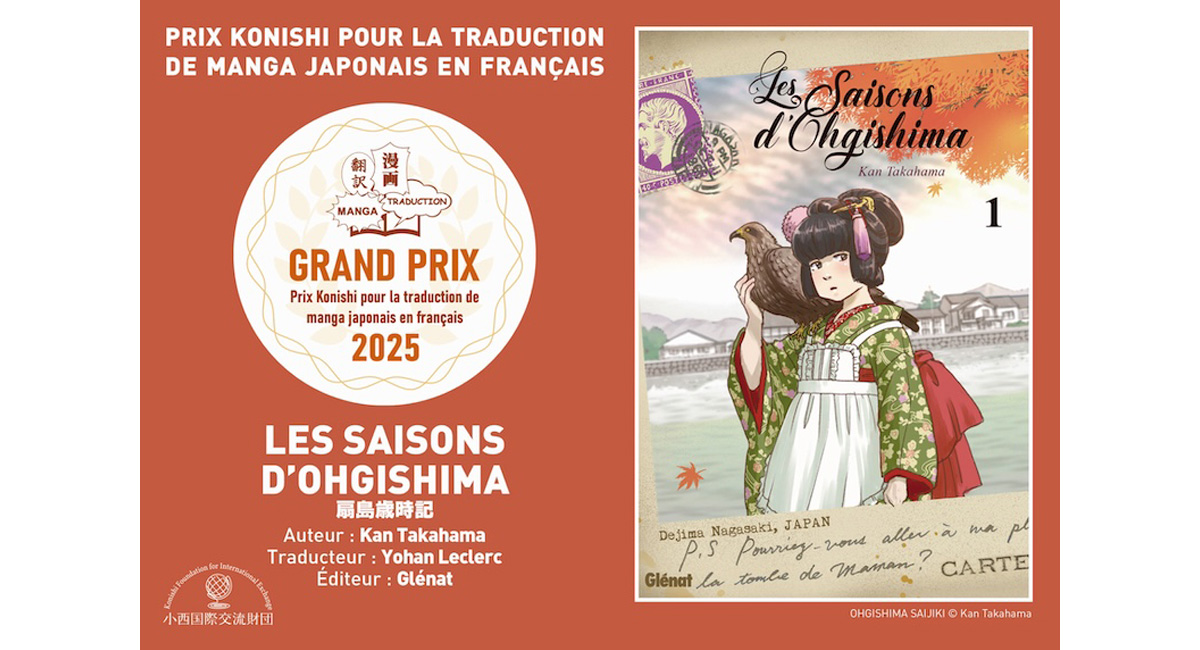Yohan LECLERC
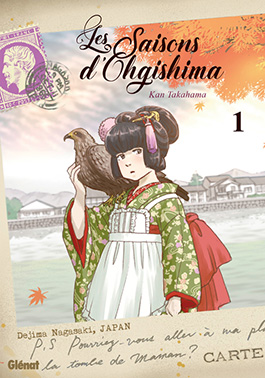

Winning Work
Les Saisons d’Ohgishima
Kan TAKAHAMA, Glénat
< Translator’s Comments >Although I was blessed to have this opportunity to translate the works of Master Takashi Takahama, but translating his historical manga will always remain a challenge. To start with, since Master Takahama’s works are based on extremely meticulous research, a corresponding level of accuracy is required to faithfully reproduce them. Next, since the characters speak in 19th-century dialects, it was necessary to preserve the unique, rustic flavor of their speech while taking care not to make it overly exaggerated. But most of all, the Nagasaki depicted in this works is a “melting pot” of various peoples. The language spoken by the townspeople is mixed with foreign vocabulary, Westerners speak in their own distinct ways, local Christians use Japanized religious terminology, and courtesans and samurai each have their own characteristic expressions. The linguistic palette is thus extremely broad. Yet, just as characters from different walks of life stand side by side through their shared culture, enabling them to converse as equals required weaving all their distinct voices into a single, vibrant tapestry.
< Comments on Winning the Award >First and foremost, I would like to express my deepest gratitude to everyone at the Konishi Foundation for International Exchange for their valuable work in recognizing the efforts of translators. I also extend my heartfelt thanks to Glénat, and in particular to Mr. Benoit Huot, who has supported me from the very beginning, for granting me this opportunity.
And, of course, I offer my profound gratitude to the original author, Master Takashi Takahama. Master Takahama brings the same vivid artistry to this work as he does to his modern narratives, masterfully capturing the lives of southern Japan’s people in the 19th century—a time of upheaval as the nation opened to the West—with remarkable sensitivity and precision.
I am truly delighted to receive this award for this work. First, because the attempt to express the many linguistic and cultural subtleties in French was both challenging and rewarding—a true “test of skill.” Above all, I was a devoted reader of Master Takahama’s manga long before I translated this work, and his comics were one of the reasons I chose this profession. It truly feels as though everything has come full circle.
< Synposis >Nagasaki, 1866, on the eve of the Meiji Restoration. In this city where Japan’s natural beauty and foreign cultures intertwine, Tamawo, a girl from the pleasure quarters, enters the residence of a Dutch merchant in Dejima, the Westerners’ district, as an apprentice alongside her older courtesan sister. Through the changing seasons and encounters with diverse people, Tamawo catches glimpses of a world beyond the confines of the pleasure quarters. Yet, the relentless passage of time and the unforgiving society around her inexorably pull her back toward the fate awaiting her.
Following The Path of Butterflies and Nyx’s Lantern, this is the latest work by author Takashi Takahama, winner of the 2020 Tezuka Osamu Cultural Prize Manga Award. It is the story of Tamawo, a 14-year-old girl born in the pleasure quarters, who bears the burden of a doomed fate and lives through a season both beautiful and cruel.
| Selection targets | : | French translations of Japanese manga published from september 1, 2023 to June 30, 2024 |
|---|---|---|
| Announcement of results | : | the 52th Angoulême International Comics Festival (February 1st, 2025) |
| Selection Committee | : | Blanche Delaborde (manga researcher) Julien Bouvard (Associate Professor of Jean Moulin Lyon 3 University) Xavier Guilbert (editor of “du 9”) Antonin Bechler (Associate Professor of Strasbourg University) Aurore Lopez (designer of E&H production)) |
< Works nominated for the 8th Manga Translation Award >
